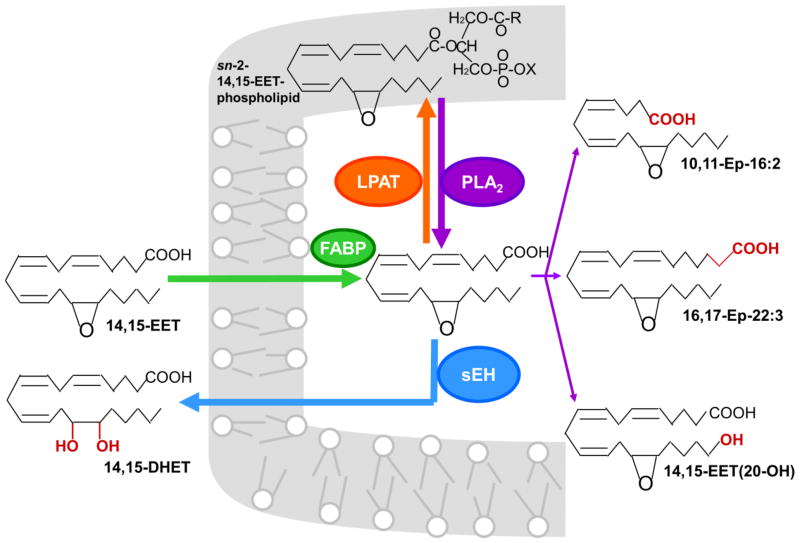Fig. 3.
Pathways of cellular EET metabolism. The illustration is for 14,15-EET, but the other EET regioisomers also are metabolized by the major pathways indicated by thick arrows with the exception of 5,6-EET which is a poor substrate for sEH. Cytosolic FABP binds to EETs, which may enhance EET uptake, although requirement for a transporter has not been demonstrated. Following uptake, the EET is either incorporated into phospholipids or hydrolyzed by soluble epoxide hydrolase (sEH) to the corresponding dihydroxyeicosatrienoic acids (DHET) which is excreted to the extracellular matrix. The mechanism of DHET exit from the cell has not been determined. Incorporation of the EET into phospholipids is mediated by a membrane-bound lysophospholipid acyltransferase (LPAT) that requires ATP and CoA. The membrane-incorporated EET is released by a phospholipases (PLA2) and can be either hydrolyzed by sEH or converted to minor metabolites. The minor metabolites include the partial β-oxidation product 10,11-Ep-16:2, chain elongation product 16,17-Ep-22:3 and ω-oxidation product 14,15-EET(20-OH). Appreciable amounts of these metabolites are produced only if sEH is deficient or inhibited, and some of the minor metabolites have been observed only in one cell type.

